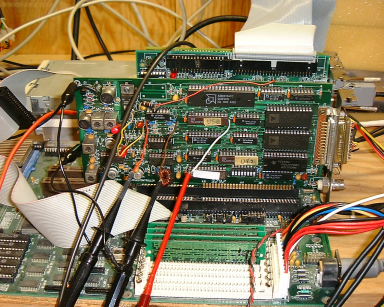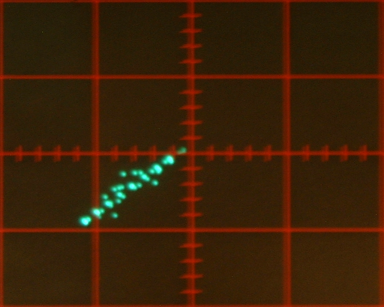
In what today seems like years long gone by, I had a job in Luxembourg installing TCP/IP in the European Parliament. This was back in the days when OSI protocols were all the rage, and to make matters even more tricky we were in fact replacing an installation of "OLInet/LAN" which were based on the OSI protocols. The European Comission was not amused but the European Parliament needed something which worked.
During evenings and weekends, I played with whatever I always play with, and amongst other things, I distinctly remember downloading and printing a paper and the schematics for a LORAN-C precision timekeeping receiver, designed and built by Dr. Dave Mills of University of Delaware.
My life takes some weird bends and turns, and some years later I found myself in my own house with wife and two kids and a small laboratory in which I could play with my stuff. Amongst the things I played with was time synchronization. I got hold of a Motorola Oncore UT+ GPS receiver and found a number of shortcomings and a couple of bugs in both the NTP software and FreeBSDs timekeeping code.
I got in touch with Dave, and amongst the things which happened were a paper with my name next to Daves, new timekeeping code for FreeBSD called Timecounters, a NTP refclock driver for the Motorola ONCORE GPS receivers and that I got the honour of borrowing the neglegted twin of Daves LORAN-C receiver.

Dave had originally written the control program for the receiver to run under MS-DOS, but being not only a UNIX-bigot, but also slightly insane about this, I wrote a new one from scratch to run under FreeBSD. I found a couple of bugs and shortcomings in the design, some of which I could work around in software some for which I had to modify the hardware. Eventually, I managed to tame the beast and lock onto a signal.

Now, I could have left it at that, but I didn't. I figured that with modern CPUs being what there were, 133 MHz Pentiums for instance, it would have been much simpler to simply put a 1 Mega-sample A/D converter on the signal and do it all in software on the computer.
That, on the other hand was a lot harder than I would have imagined. But these pages tell the story of how I eventually got to prove my point, and in the process build what may be the last LORAN-C receiver in the world as a PC based Software Defined Radio.
Enjoy,
Poul-Henning
$Header: /home/phk/CvsPhk/Loran3/intro/index.html,v 1.2 2005/02/27 19:43:38 phk Exp $